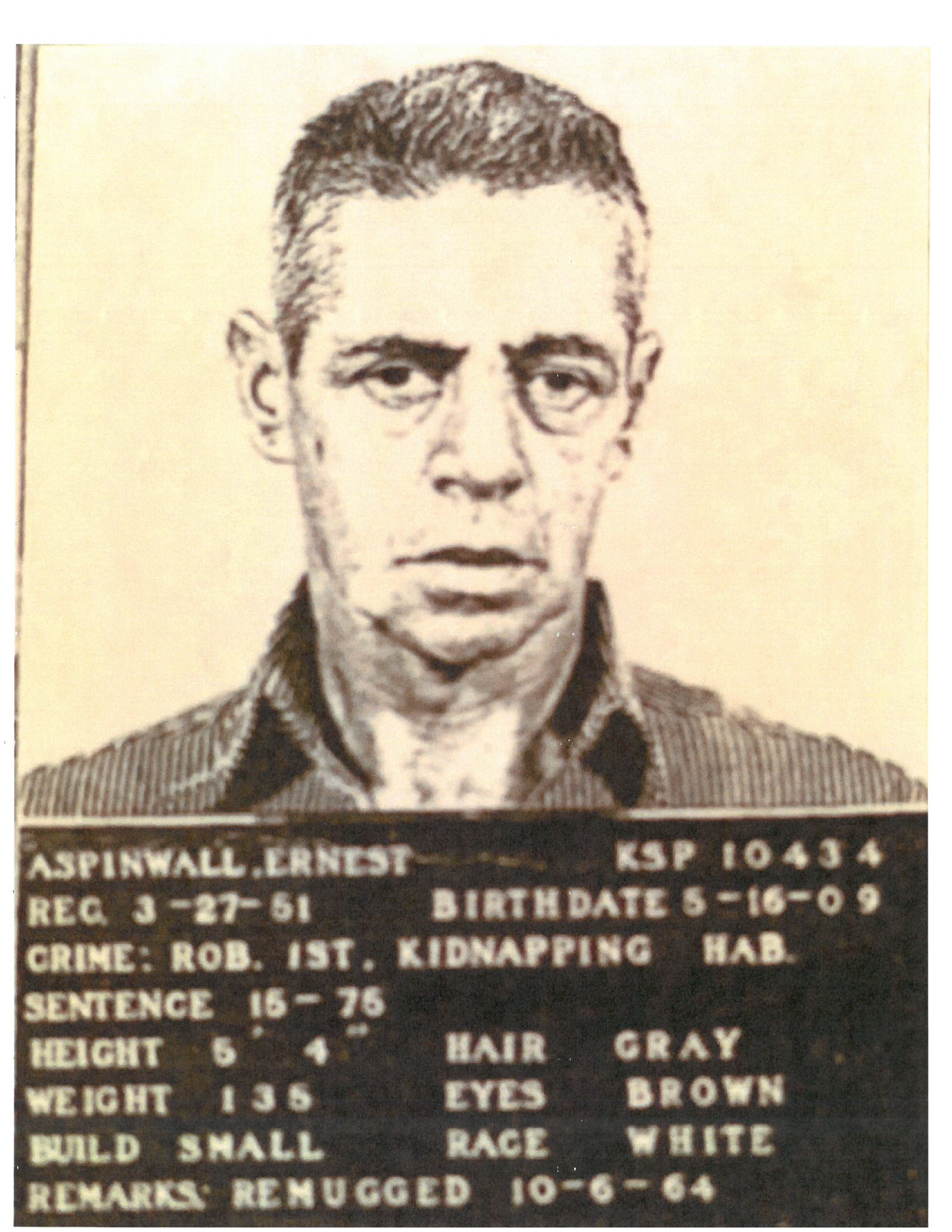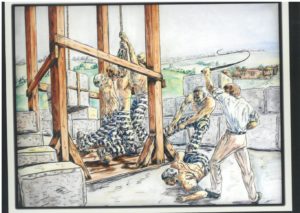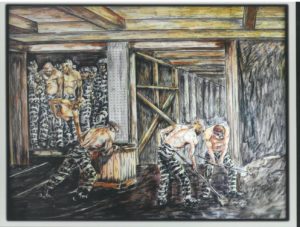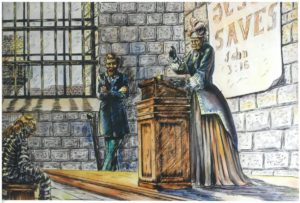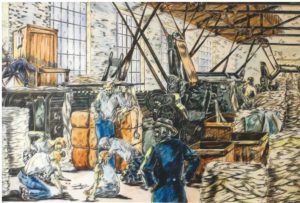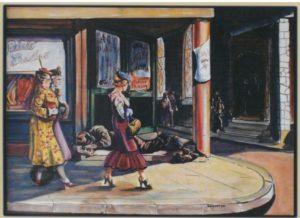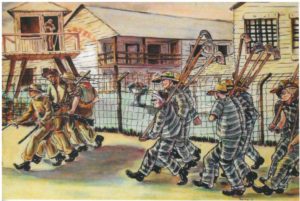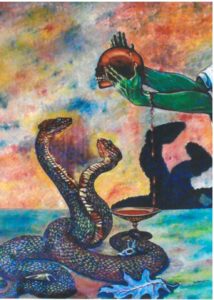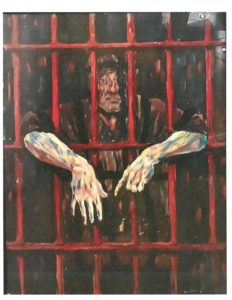If you own a painting by Ernest Aspinwall, Bob Bayer wants to talk.
Aspinwall is hardly a household name, but he was something of a criminal celebrity in Wichita in the 1940s and ’50s.
Charged with kidnapping a Wichita taxi driver in October 1940, Aspinwall escaped from the Sedgwick County Jail three months later and wasn’t returned to face trail here until a decade later. He soon attracted the attention of newspaper reporters for his artistic talents — and at least one regular female visitor for his sensitive good looks. An article by a United Press correspondent said that during his first three months in the jail, Aspinwall “produced 30 illustrations for a children’s book, several religious pictures, a stack of prison scenes and a good many other scenes which he paints from memory.”
Aspinwall was eventually convicted and sent to Lansing State Prison with a life sentence as a habitual criminal, though his sentence was commuted.
Bayer, who was a teenager at the time, doesn’t recall hearing about Aspinwall then. Rather, he became familiar with Aspinwall’s story after marrying Dora Timmerman, the widow of Lew Timmerman, a lawyer who represented Aspinwall in Wichita. Aspinwall had given Timmerman 15 paintings for defending him.
Dora had one of the paintings displayed in her home when she and Bayer married in 2006, but he didn’t think much of it until he found 14 more paintings and a notebook full of newspaper clippings about Aspinwall in 2014, when the couple moved to Larksfield Place.
“Then I realized that, hey, there’s a real story here,” Bayer said.
With Dora’s encouragement, Bayer started researching Aspinwall’s life with the intention of writing a book about him. He found that Aspinwall was distantly related to one of Boston’s founding families, but had spent most of his young life in jail. Shortly after his escape from Sedgwick County, he was arrested and sentenced to seven years in the Missouri state penitentiary, then transferred to Louisiana state penitentiary as a parole violator for a sentence given in 1935.
Bayer has traveled to Topeka to look up Aspinwall’s prison record and to Lansing twice to see artwork he completed there. Seventeen of Aspinwall’s paintings hang in a hallway of the administrative building, Bayer said, and he also painted two large murals in a recreation building, although Bayer doesn’t know if they survived a recent renovation.
“They didn’t know anything about him,” Bayer said of prison officials. “I gave them information about him.”
Bayer also went to the Missouri state penitentiary in Jefferson City, but “everything he had done there had either been destroyed or burned up when they had a riot there.”
Bayer said he’s attracted to Aspinwall’s story partly because he was in the “crime prevention business” as the owner of Federal Alarm Co. and partly because he paints himself.
“I’ve never seen any paintings any place like the ones he did about what prison life was like,” he said.
Bayer believes Aspinall completed about 15 more paintings in the Sedgwick County Jail prior to his 1951 conviction, and he’d like to see those before wrapping up his book.
“There was a gal that he befriended, she took some of his paintings out and showed them to people. I don’t know whether he sold some or just gave them away or what.”
“If they would be for sale at a reasonable price, I would be interested in buying some. But I’d just like to see them and hear the story about them.”
Aspinwall finished life as a street artist in San Francisco who also counseled teens to avoid a life of crime.
“I don’t think he was a real bad criminal,” Bayer said. “He just made some real poor choices.”
Anyone with a painting by Aspinwall may contact Bayer through The Active Age by calling 316-942-5395 or emailing joe@theactiveage.com.
